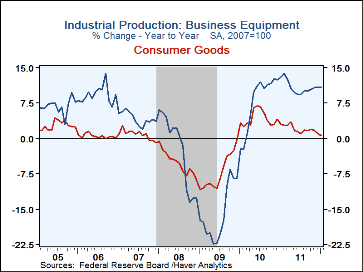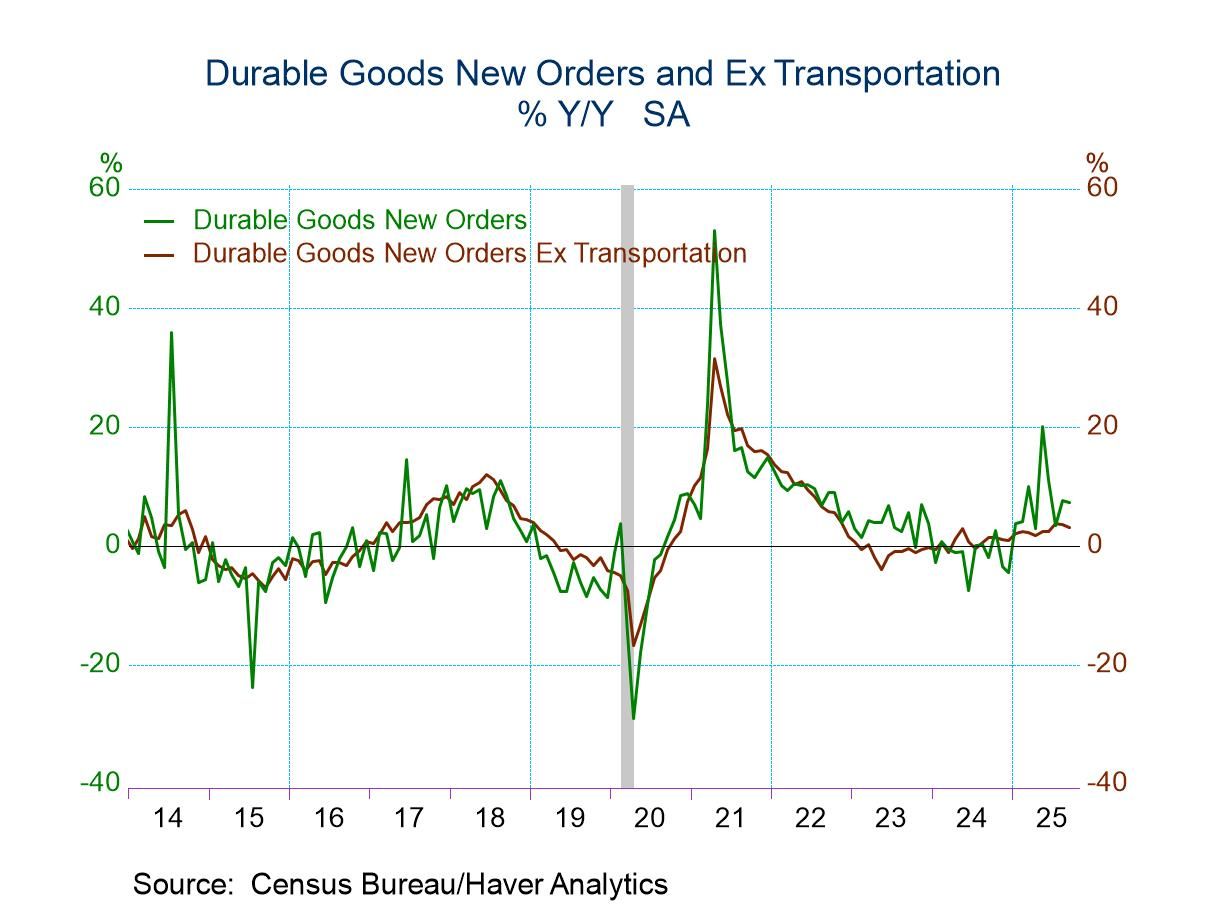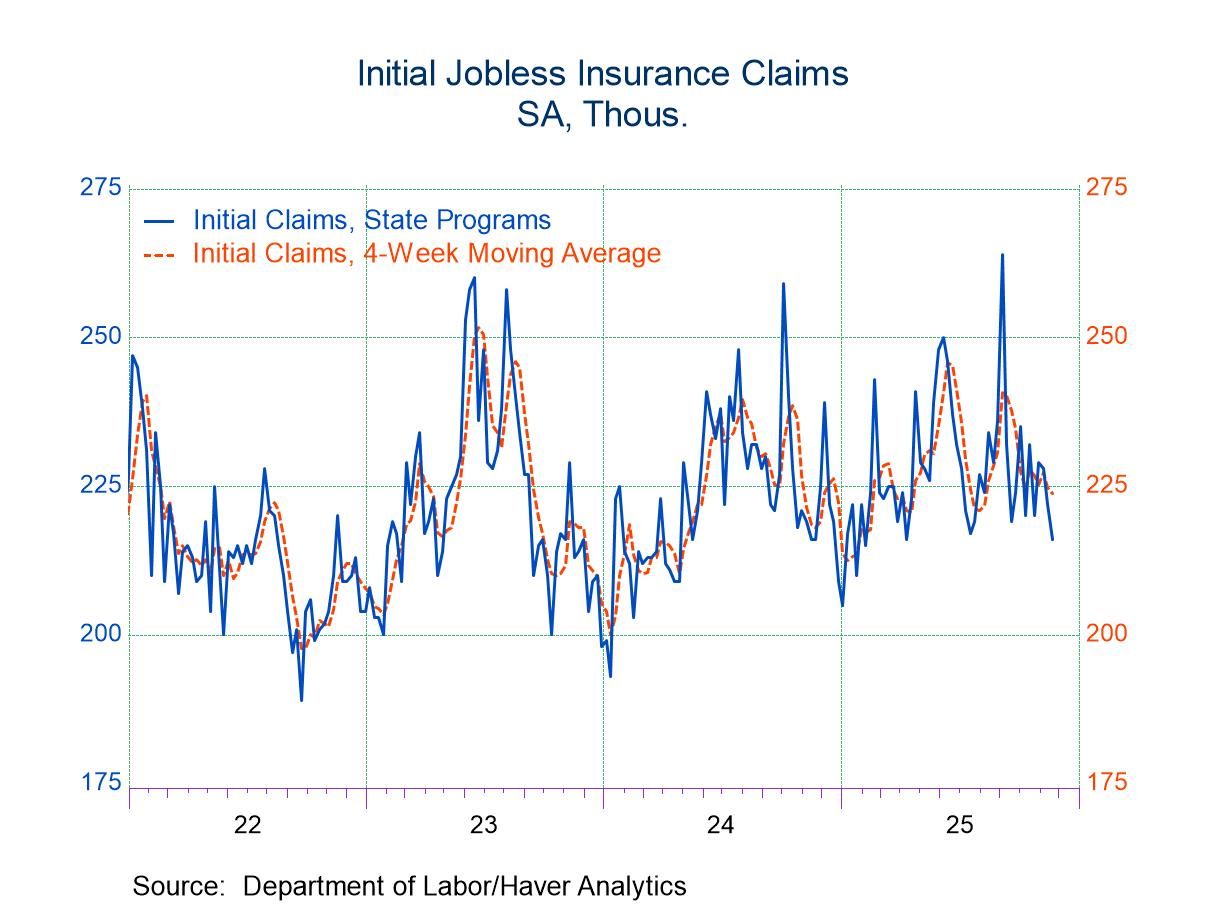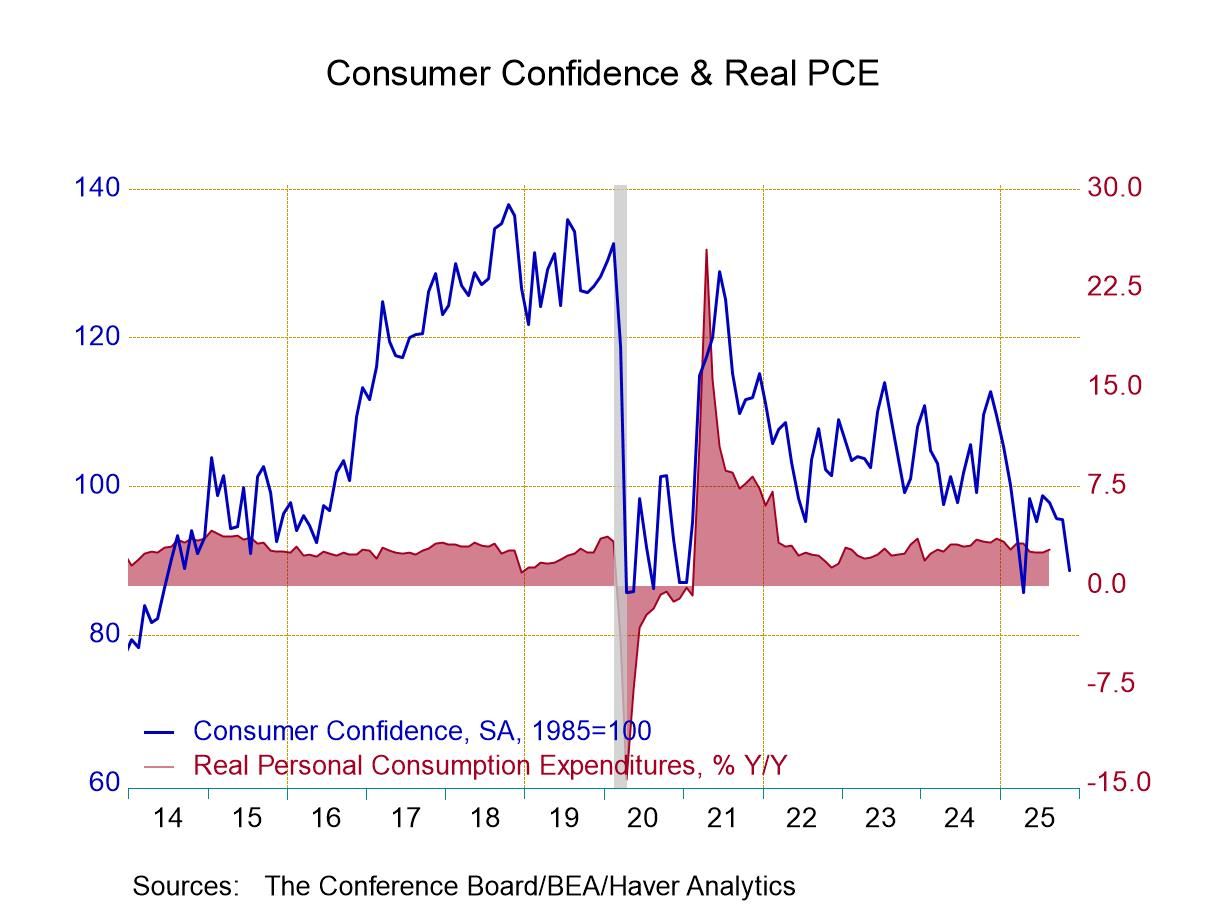 Global| Feb 15 2012
Global| Feb 15 2012U.S. Industrial Output Is Unchanged But Factory Gain Is Solid
by:Tom Moeller
|in:Economy in Brief
Summary
Industrial production was unchanged last month (3.3% y/y) following a revised 1.1% December rise, initially reported as 0.4%. The latest figure disappointed Consensus expectations for a 0.7% rise, according to Action Economics. [...]
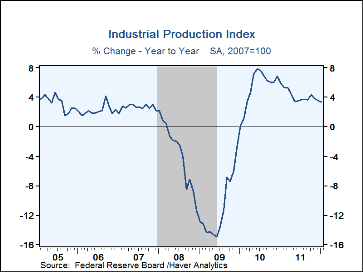 Industrial production was unchanged last month (3.3% y/y) following a
revised 1.1% December rise, initially reported as 0.4%. The latest figure
disappointed Consensus expectations for a 0.7% rise, according to Action
Economics. Factory sector output rose a firm 0.7% (4.6% y/y) after a
strengthened 1.5% December gain. Warm temperatures again lowered utility
output by 2.5% last month (-7.5% y/y), down for the fifth month in the
last six.
Industrial production was unchanged last month (3.3% y/y) following a
revised 1.1% December rise, initially reported as 0.4%. The latest figure
disappointed Consensus expectations for a 0.7% rise, according to Action
Economics. Factory sector output rose a firm 0.7% (4.6% y/y) after a
strengthened 1.5% December gain. Warm temperatures again lowered utility
output by 2.5% last month (-7.5% y/y), down for the fifth month in the
last six.
Business equipment production again was the bright spot in the factory sector. It posted a 1.8% increase after December's 1.4% rise which was double the initial estimate. During the last twelve months, output was up a strong 10.9% and equaled last year's rise. This y/y gain again reflects a one-quarter y/y rise in transit equipment, 7.5% growth in information processing & other and a 6.3% rise in industrial supplies & other. In the consumer sector where output slipped 0.1% (+0.5% y/y), auto production jumped 5.9% (17.0% y/y) while computers, video & audio posted a modest 0.5% rise (1.0% y/y). Appliance, furniture & carpeting production also ticked up 0.1% (5.9% y/y). Nondurables output fell 1.2% (-2.3% y/y), held down by energy, but clothing production recovered 2.4% (-2.8% y/y). Excluding the high-tech & motor vehicle industries, industrial production fell 0.3% last month (2.8% y/y) following a 0.8% December rise.
Capacity utilization held roughly stable m/m at 78.5%. In manufacturing alone, utilization rose m/m to 77.0%, up from the recession low of 64.4%. Overall capacity is estimated to have risen 1.2% y/y following a 2.2% decline during 2010. In the factory sector, capacity rose 0.9% y/y. It was up 0.3% excluding the high-tech industries -- after four years of decline.
Industrial production and capacity data are included in Haver's USECON database, with additional detail in the IP database. The expectations figure is in the AS1REPNA database.
| Industrial Production (SA, % Change) | Jan | Dec | Nov | Jan Y/Y | 2011 | 2010 | 2009 |
|---|---|---|---|---|---|---|---|
| Total Output | 0.0 | 1.1 | -0.1 | 3.3 | 4.2 | 5.3 | -11.2 |
| Manufacturing | 0.7 | 1.5 | -0.2 | 4.6 | 4.5 | 5.4 | -13.5 |
| Consumer Goods | -0.1 | 0.9 | -0.6 | 0.5 | 2.0 | 4.3 | -7.2 |
| Business Equipment | 1.8 | 1.4 | 0.6 | 10.9 | 10.8 | 7.7 | -16.3 |
| Construction Supplies | -0.4 | 3.0 | 0.1 | 5.3 | 5.1 | 3.8 | -22.5 |
| Materials | -0.4 | 0.9 | 0.4 | 3.5 | 4.6 | 6.3 | -11.6 |
| Utilities | -2.5 | -2.5 | 0.1 | -7.5 | -0.1 | 4.0 | -2.6 |
| Capacity Utilization (%) | 78.5 | 78.6 | 77.9 | 76.9 | 77.3 | 74.5 | 69.1 |
| Manufacturing | 77.0 | 76.5 | 75.4 | 74.3 | 74.9 | 71.7 | 66.2 |
Tom Moeller
AuthorMore in Author Profile »Prior to joining Haver Analytics in 2000, Mr. Moeller worked as the Economist at Chancellor Capital Management from 1985 to 1999. There, he developed comprehensive economic forecasts and interpreted economic data for equity and fixed income portfolio managers. Also at Chancellor, Mr. Moeller worked as an equity analyst and was responsible for researching and rating companies in the economically sensitive automobile and housing industries for investment in Chancellor’s equity portfolio. Prior to joining Chancellor, Mr. Moeller was an Economist at Citibank from 1979 to 1984. He also analyzed pricing behavior in the metals industry for the Council on Wage and Price Stability in Washington, D.C. In 1999, Mr. Moeller received the award for most accurate forecast from the Forecasters' Club of New York. From 1990 to 1992 he was President of the New York Association for Business Economists. Mr. Moeller earned an M.B.A. in Finance from Fordham University, where he graduated in 1987. He holds a Bachelor of Arts in Economics from George Washington University.


